20 Years of Drawing the World to Chicago Millennium Park

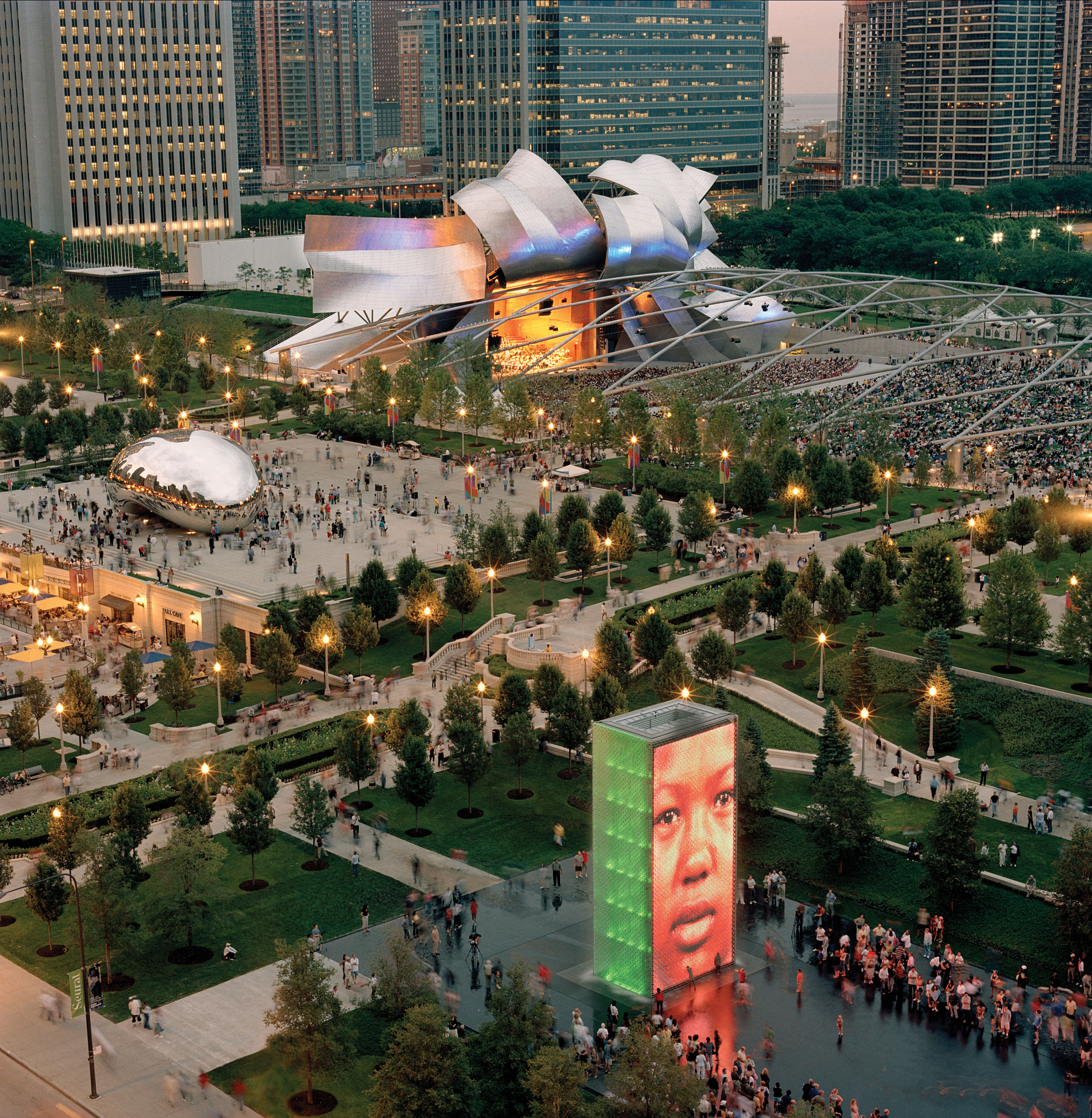
This summer Millennium Park celebrates its 20th anniversary. In honor of this milestone, CGN is strolling the paths of well-known and hidden treasures to reexamine a park that is much more than what it seems.
By MARY DE YOE
If you moved to Chicago in the last 15-20 years, it is likely unfathomable to imagine a time when downtown directions were not centered around relation to “The Bean.” The 33-foot tall, 66-foot long stainless steel Cloud Gate by British artist Anish Kapoor became an instant touchstone and meet-up spot. Equally difficult to imagine is a downtown summer day without children splashing through Crown Fountain. These works, along with the curling steel of Frank Gehry-designed Pritzker Pavilion are the gravitational pull of Millennium Park, which in addition to these monumental pieces also boasts one of the city’s best galleries.
Millennium Park is the product of a partnership between the City of Chicago and the Millennium Park Foundation, which was established in 1998 to support the vision, design, and construction of the park. The idea was to create a “world class arts and culture space.” Many artists, designers, and architects were involved in the plans for the park. As a result the park, which houses permanent and temporary installations, is an aggregate of styles and voices.
One of the most prominent voices is Spanish artist Jaume Plensa who designed Crown Fountain, which sits at the corner of Michigan Avenue and Monroe Street. Two enormous towers bookend a wide shallow reflecting pond. At all times of the year, the facades are illuminated with video of the faces of Chicagoans. For the project, the artist photographed 1,000 Chicagoans representing Chicago’s vast demographics in terms of age, gender and ethnicity. During the summer months, water falls from the tops of the towers into the pond and flows from the open mouths of the faces on the screen.
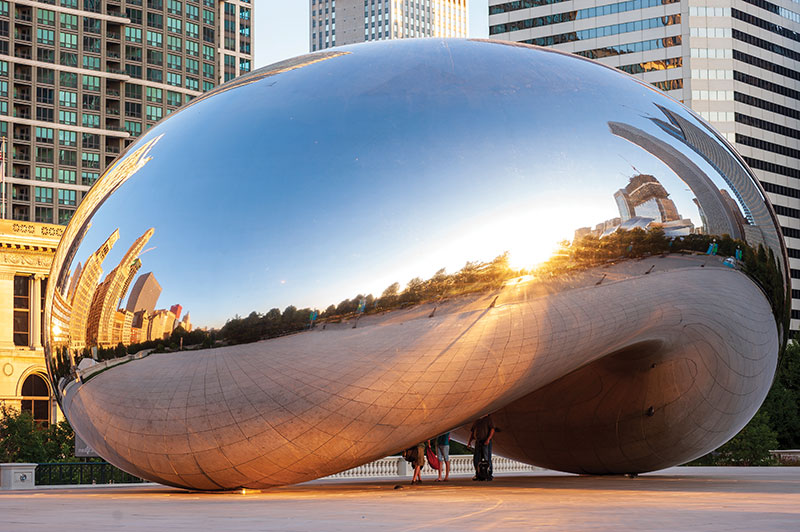
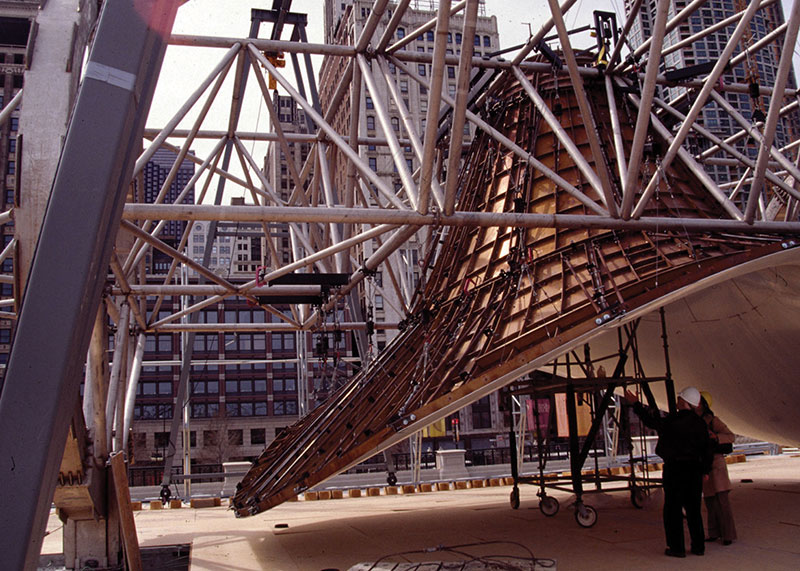
Considering the piece on the upcoming anniversary, Plensa said, “Obviously, I am thrilled by the way that the city has embraced the Crown Fountain [...] How beautiful it is to see the piece changing throughout the seasons. Every time I visit Chicago, I can see how much my original idea to create a gathering place, continues its purpose to bring people in to share the dreams of a community.”
Paul Gray, Principal at Gray, which represents Plensa shared this about the origins of the fountain: “Crown Fountain was born as a patron’s challenge and an artist dreaming “what could a fountain be?” In his first days considering this question, Jaume Plensa focused on water[...] After also considering what artists who came before him had done across time, he settled on a few principles; his fountain should allow us to realize the widely shared dream of walking on water, his fountain should allow water to do as it does in nature - fall, his fountain should invite people into its beating heart, his fountain should depict not gargoyles or idealistic maidens, but real people, and his fountain should use media of our time.”
Every time I visit Chicago, I can see how much my original idea to create a gathering place, continues its purpose to bring people in to share the dreams of a community.”
Jaume Plensa
Some temporary exhibitions in the park have followed a similar approach to media. For instance in 2012 the artists Petra Bachmaier and Sean Gallero of Luftwerk created Luminous Field in the ATT Plaza (also known as, “where The Bean is”). Accompanied by music composed by Owen Clayton Condon, for 10 days the project illuminated the ground beneath the sculpture with projections that video-mapped the tiles of the plaza creating a grid-like pattern of shapes and colors, which were reflected - quite stunningly - on the bean’s surface.
At the north and south ends of the park the Boeing Galleries present rotating exhibitions. Tucked deeper into the park, away from the high-activity zones, these spaces offer surprising and unexpected encounters. Most recently, the galleries featured the work of two Chicago-based artists, Edra Soto and Christine Tarkowski.
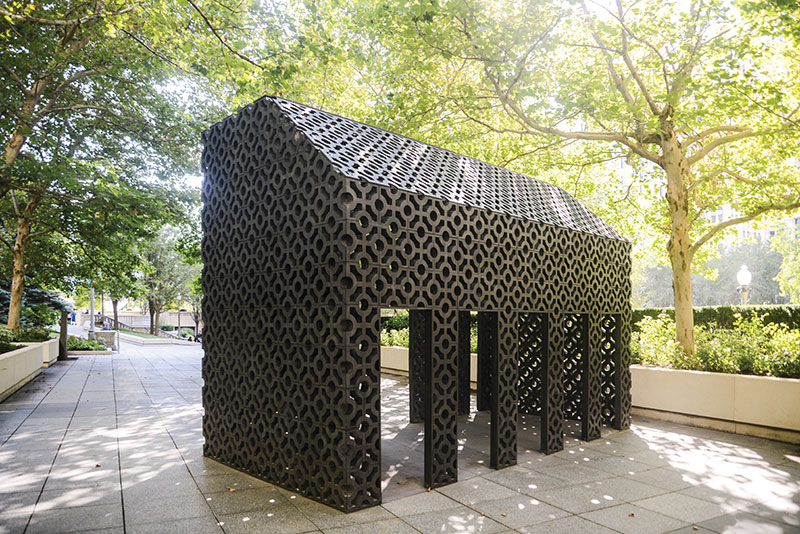
Soto’s elegant Screenhouse–a 10-foot structure of concrete blocks, which closely resembled what its title suggests–examined the decorative screens, known as “rejas” and “quiebrasoles,” which are ubiquitous in Soto’s birthplace in Puerto Rico. Tarkowski’s work, titled When we call the Earth by way of distinction a planet and the Moon a satellite, we should consider whether we do not, in a certain sense, mistake the matter. Perhaps - and not unlikely - the Moon is the planet and the Earth the satellite! Are we not a larger moon to the Moon, than she is to us? asked viewers to traverse heavy boulders beneath dozens of hanging objects made of colorful hand blown glass.
When We Call...., shared Tarkowski, [is] a physically processional experience for the viewer, where one travels within the work, sandwiched between the earth and the sky, the concrete monoliths and the ethereal glass objects. The concrete sculptures may seem old and stony, are obviously man-made as re-creations or possibly a dislocated hunk from a larger whole originating elsewhere…. And the glass shapes miraculously floating overhead in their intentionally unnatural color palette. Their shapes are ambiguous but suggestive of a plastic bag caught in the trees, or perhaps rocks used in ornamental landscaping.
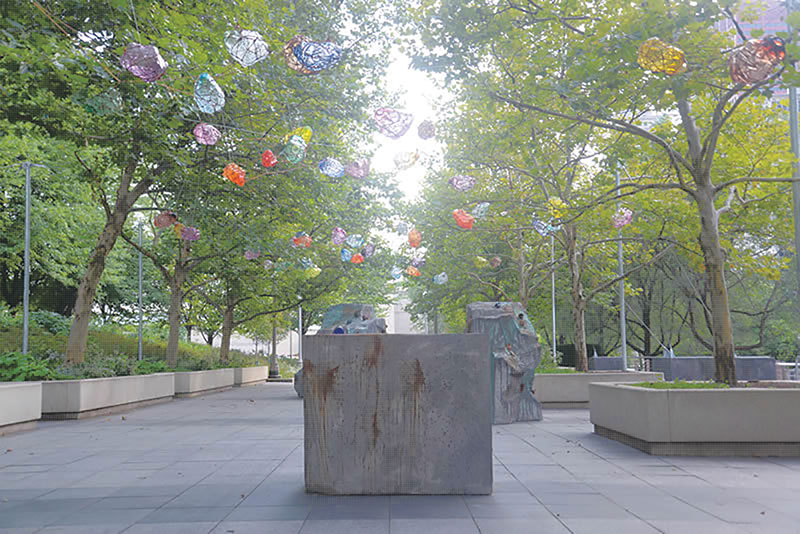
Since opening, the Boeing Galleries, which rotate approximately every 18-24 months have exhibited work by more than 10 contemporary artists from Chicago and around the globe including Jean-Luc Mylayne, Chakaia Booker, Jun Kaneko, Yvonne Domenge and a special 10th anniversary exhibition of four sculptures by Jaume Plensa. Plensa’s 1004 Portraits, comprised of four cast iron and resin sculptures of young girls, “continues the story of the original 1,000 portraits of Chicago residents that illuminate the Crown Fountain every day.”
“As part of Millennium Park’s [...] 20th anniversary and in partnership with the Millennium Park Foundation,” said James Castillo, Director of Public Art at the Chicago Department of Cultural Affairs and Special Events, “we look forward to seeing new public art installed in the Boeing Galleries, including an augmented reality exhibition featuring talented Chicago artists,[...]. Millennium Park has become synonymous with world-renowned public art, and we are delighted to see new artists sharing their work with the public.”
#
To read more about Millennium Park's 20th Anniversary celebrations and events click here






